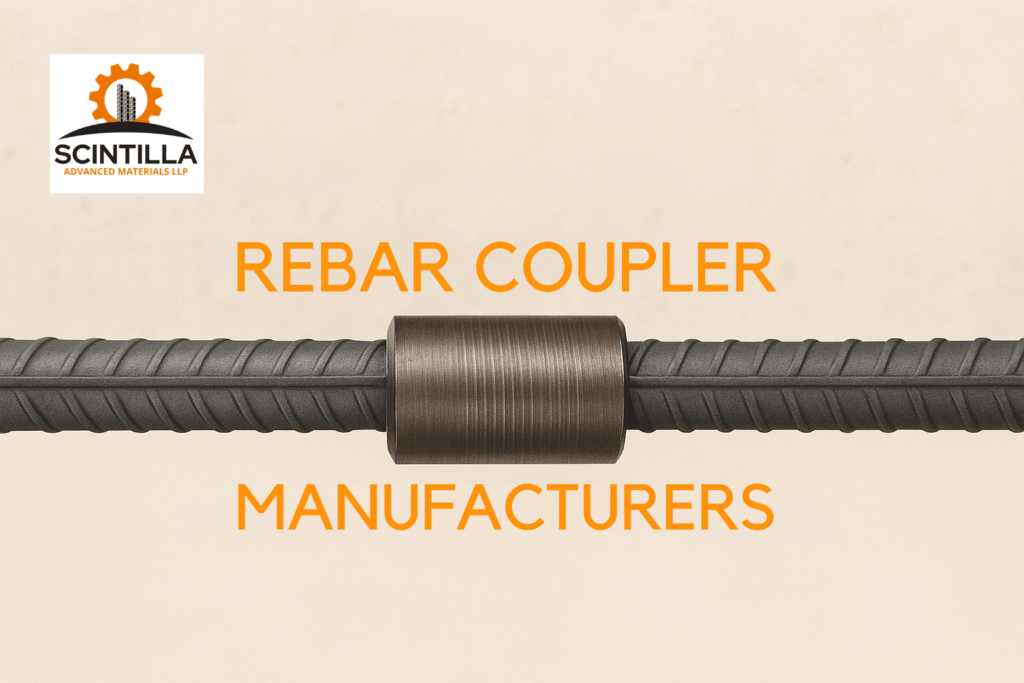India’s infrastructure is going through a considerable change. Changing approaches are making building faster, stronger, and safer. This is happening in metro trains, expressways, high-rises, and smart cities. Rebar couplers, especially those made by Rebar coupler manufacturers in India, are one of the many new ideas that are causing this change. These mechanical joining systems help projects cut down on waste, speed up schedules, and improve the performance of structures while still meeting global building standards.

The Shift Toward Modern Reinforcement Solutions
Traditional lap welding used to be an essential part of building with reinforced concrete, but better methods are now being used instead. Overlapping steel bars are needed for lap joints, which raises the cost of materials, makes joints more crowded, and could lead to weak spots in buildings. Rebar couplers link reinforcement bars end-to-end via threaded, swaged, or grouted methods. This ensures direct and continuous load transfer.
This change is apparent in big building projects that need to be precise, safe, and quick. Indian companies that make rebar couplers have noticed this change and have responded by coming up with new ways to create and make their products to meet the needs of modern consumers.
Manufacturing Excellence Meets Engineering Precision
Rebar coupler manufacturers in India use CNC threading machines, computerized assembly lines, and factory testing labs. These tools allow them to create couplers that fulfill IS 16172 and BS 8110/ASTM A1034. The concentration on engineering correctness distinguishes these companies. Every coupler is built to handle a lot of stress, pressure, and even earthquakes. Manufacturers put every batch of goods through fatigue tests, pull-out tests, and full-load evaluations to make sure they all perform the same way on-site.
These companies also invest in R&D to create transition, position, and seismic couplers for complicated structures. Due to the variety of products, architects and engineers can push design boundaries without compromising safety or efficiency.
Supporting Large-Scale Infrastructure with Scalable Solutions
India is building more and more infrastructure at a speed that has never been seen before. In Mumbai, there are metro lines; in Delhi, there are flyovers; and in Gujarat, there are water treatment plants. Rebar coupler manufacturers in India are making this growth possible by providing flexible and on-time supply lines.
Unlike foreign systems, which are often late and cost a lot, Indian-made couplers can be made and sent anywhere in the country quickly. These companies have carefully placed factories and networks of distributors that help them meet the needs of large projects without delaying the building process. They also offer support, training, and customization choices at the site level that make it easy to fit in with local building practices.
Sustainability and Cost Efficiency in Focus
When it comes to infrastructure today, innovation is useless without sustainability. When used with Indian rebar couplers, a lot less steel is used, which makes building more eco-friendly. Couplers attach bars without overlapping, saving material and weight overlap splicing, which requires longer bar lengths. This reduces project costs and steelmaking CO2 emissions.
Fewer overlaps reduce congestion, improving concrete flow and structure issues. The building will last longer and be stronger, which is ideal for sustainable, future-ready infrastructure.
Conclusion
Rebar coupler manufacturers in India are currently working with the government to build the country’s infrastructure. They are establishing a safer, more efficient, and greener era of buildings using cutting-edge technology, engineering, and delivery that can be scaled up. As India builds smarter cities, faster roads, and stronger buildings, these firms will become more crucial. At Scintilla, our goal is to give construction workers advanced rebar coupling technology that makes structures stronger, cuts down on waste, and speeds up the installation process.


